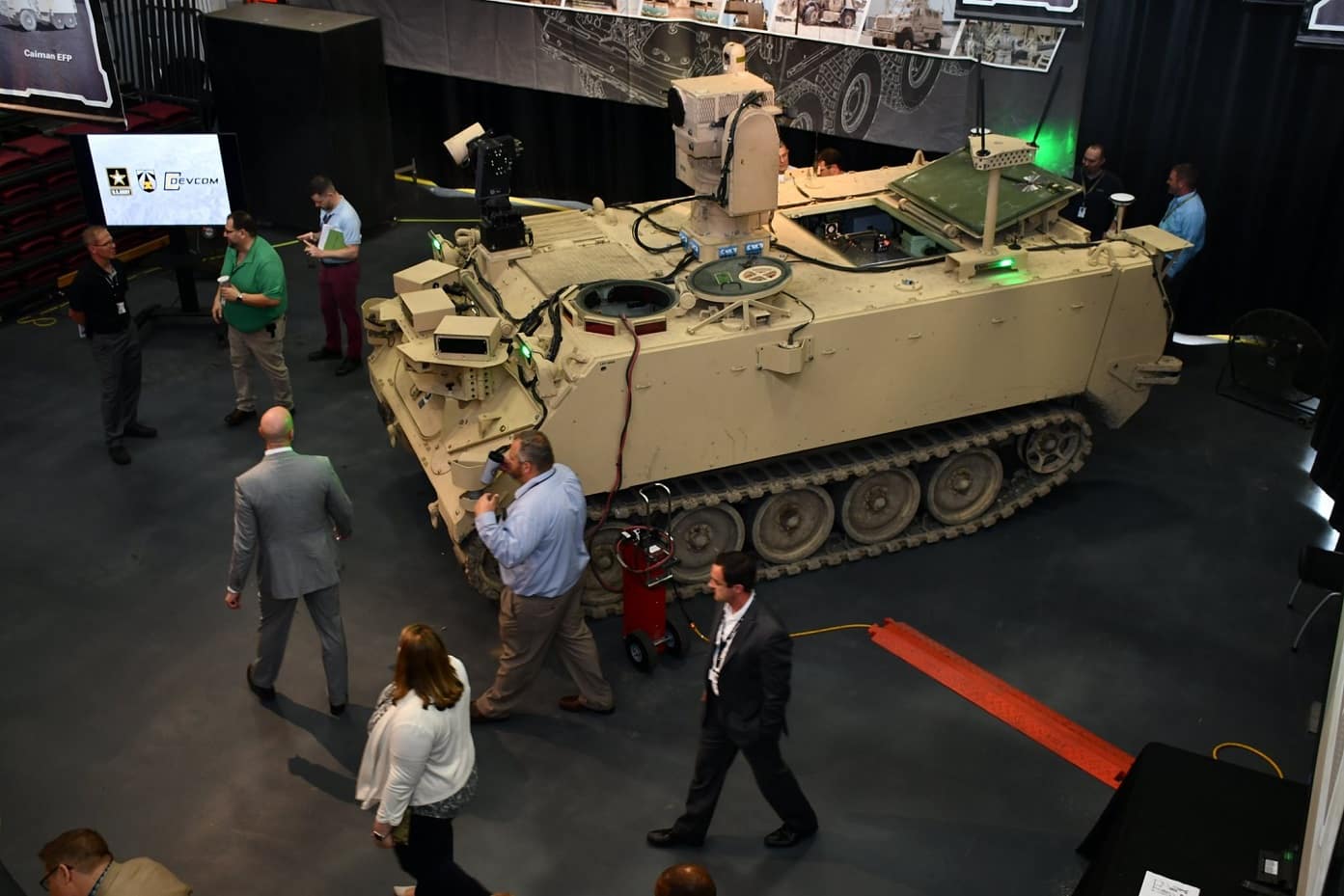The U.S. Army CCDC Ground Vehicle Systems Center has unveiled an ambitious project of Mission Enabler Technologies-Demonstrator (MET-D) vehicles that includes and newest Robotic Combat Vehicle (RCV) on M113 surrogate platform.

The demonstrator leverages the latest technology in cameras, data display, graphical user interface, drive-by-wire capability, unmanned aerial vehicle-provided video, and advanced communications to help an infantry squad’s battlefield situational awareness and enhance its communication capability.
The RCV designed to support modular mission payloads and enable commanders to tailor the vehicle’s capabilities to each particular mission. The development of technology allows you to control the war machine remotely and connected to combat battle groups of other unmanned combat vehicles. The one of the manned variant would controlling the other two or four unmanned combat vehicles or RCV. The group of RCVs would be controlled by Soldiers through a tethered radio link. At the highest level, a vehicle might be fully autonomous, requiring artificial intelligence and neural networking – something not yet achievable, but clearly on the horizon.
It expected that will be developed three variants of RCV. The first variant called the RCV-Light will weigh approximately seven tons and include a sensor bundle that will allow the platform to deliver lethal fires. The RCV-Medium will weigh about 10 tons and be equipped with a medium-caliber weapon cannon and an anti-tank guided missile. And the RCV-Heavy will weigh about 20 tons with direct-fire lethal capabilities.

During the event was unveiled the RCV-Light that demonstrates and transitions new technology to future programs and Soldiers can control it remotely, getting closer to using optionally manned vehicles.
To provide autonomy in the unmanned vehicle have emerging sensors, modules artificial intelligence, and cyber technologies with integrated 360 situational awareness, autonomous search and target acquisition (AiTD/R) unburdening the Soldier operator, with a high degree of survivability and lethality in a highly contested environment Where the RCV is experiencing loss of control or is visually lost, the vehicle returns to a last point of communication.
According to the Army Futures Command, MET-D brings one step closer to the Next-Generation Combat Vehicle.
The new generation of combat vehicles is intended to replace the Bradley starting in 2026 and is designed to better operate in future environments that would allow soldiers to maneuver to a position of advantage and to engage in close combat and deliver decisive lethality during the execution of combined arms maneuver.